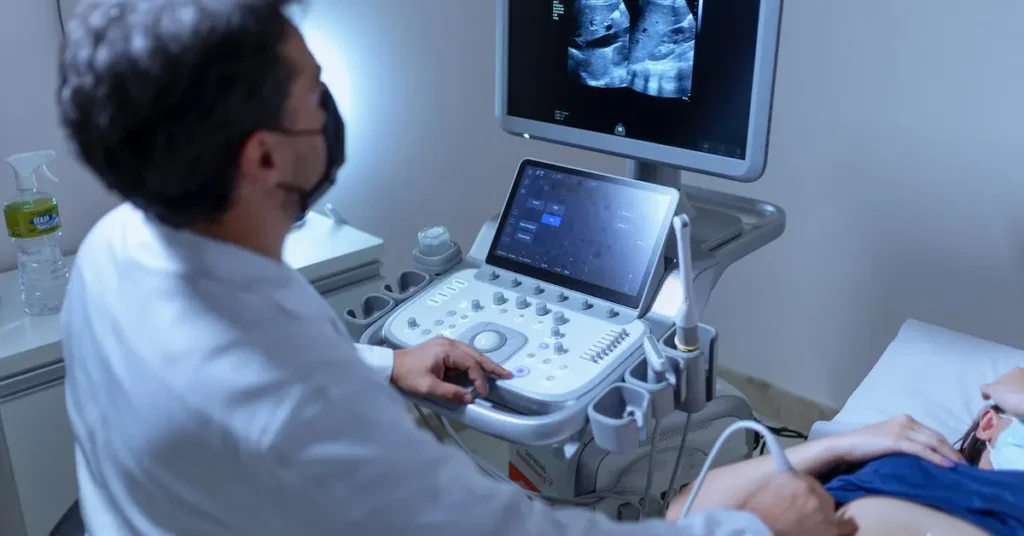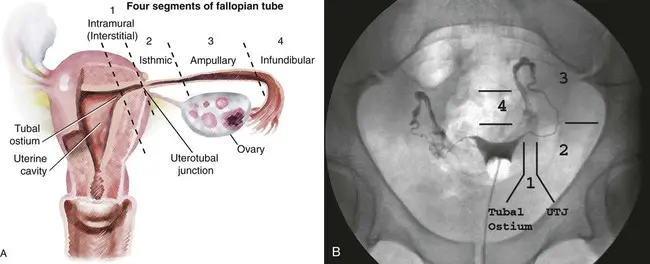Color Doppler is a technique used in medical ultrasound that allows for the visualization of blood flow direction and velocity within a user-defined area. This is achieved by color-encoding Doppler information and displaying the colors as an overlay on the 2D image of the heart. Color flow Doppler is used frequently in sonography to semiquantitatively assess overall blood flow to a region of interest. Depiction of the general velocity and direction of blood flow within the heart and blood vessels is of primary importance in echocardiography and vascular ultrasound respectively.
Ultrasound facilities that offer Color Doppler services are equipped with specialized ultrasound machines that are capable of performing this technique. These facilities may be found in hospitals, clinics, or standalone imaging centers. One such facility is Atulaya Healthcare, which offers Color Doppler Ultrasound services at their centers in Chandigarh, Jammu, Faridabad, and Ludhiana. They use the Acuson X500 ultrasound system from Siemens, which offers versatility for today’s multispecialty applications. Doppler ultrasound images can help the physician to see and evaluate blockages in blood flow (such as clots), narrowing of vessels, tumors, and congenital malformation.

Introduction: Color Doppler and ultrasound facilities play a crucial role in modern healthcare. These diagnostic tools utilize ultrasound waves to create real-time images and assess blood flow. Below, we explore the facilities, applications, and benefits of Color Doppler and ultrasound in healthcare.
1. Definition:
- Color Doppler Ultrasound: A medical imaging technique that combines traditional ultrasound with Doppler technology to visualize blood flow within the body’s blood vessels. It uses color-coded images to display the direction and velocity of blood flow, aiding in the diagnosis of various medical conditions.
2. Facilities:
- Ultrasound Machines: These devices use high-frequency sound waves to create images of internal structures. They are equipped with Color Doppler capabilities to assess blood flow.
- Dedicated Ultrasound Labs: Healthcare facilities typically have specialized ultrasound rooms with state-of-the-art equipment.
- Portable Ultrasound Units: Smaller, portable ultrasound devices are available for use in different clinical settings, including emergency departments, operating rooms, and remote locations.
- Skilled Sonographers: These healthcare professionals are trained to operate ultrasound machines and perform exams.
3. Applications:
- Obstetrics and Gynecology: Used for prenatal care, monitoring fetal development, and detecting gynecological conditions.
- Cardiology: Assesses heart function, blood flow, and identifies heart conditions.
- Abdominal Imaging: Evaluates the liver, kidneys, pancreas, and other abdominal organs.
- Vascular Studies: Examines blood vessels for blockages, clots, or abnormal blood flow.
- Musculoskeletal Imaging: Assesses muscles, tendons, and joints for injuries or diseases.
- Emergency Medicine: Rapid assessment of trauma patients, including detecting internal bleeding or organ damage.
- Urology: Evaluates the urinary tract and assists in diagnosing conditions like kidney stones.
4. Benefits:
- Non-Invasive: Ultrasound and Color Doppler are non-invasive techniques, meaning they do not require surgical procedures or radiation exposure.
- Real-Time Imaging: Provides immediate, dynamic images, allowing for quick diagnosis and treatment decisions.
- Safety: Ultrasound is considered safe for all age groups, including pregnant women and infants.
- Versatility: Used in various medical specialties, making it a versatile diagnostic tool.
- Cost-Effective: Generally more affordable than other imaging modalities like MRI or CT scans.
5. Limitations:
- Operator-Dependent: The quality of images and accuracy of diagnosis can depend on the skill and experience of the operator.
- Limited Penetration: Ultrasound has limited penetration capabilities, making it less effective for imaging deep structures or obese patients.
- Not for All Conditions: While highly useful, ultrasound may not be the best choice for certain conditions that require detailed imaging or functional assessment.
Conclusion: Color Doppler and ultrasound facilities are essential components of modern healthcare. They provide valuable insights into a wide range of medical conditions while offering safety, versatility, and cost-effectiveness. However, their effectiveness can be operator-dependent, and they may not be suitable for all clinical scenarios. When used in conjunction with other diagnostic tools, they contribute significantly to accurate diagnoses and patient care.




